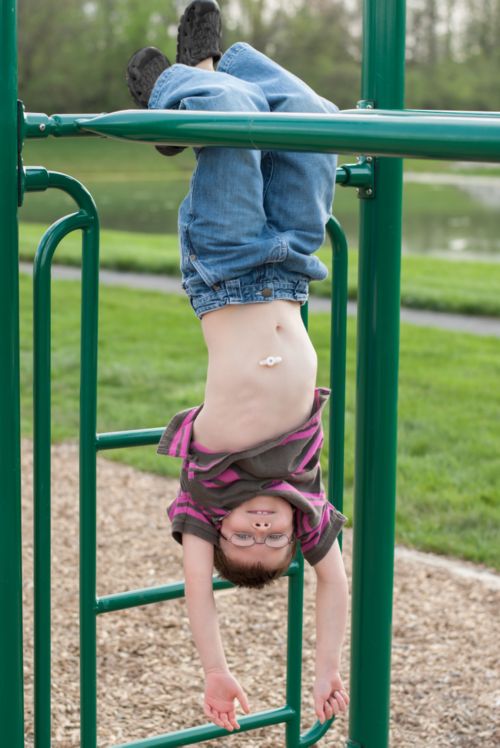Skin irritation from leaking around the tube
Leaking can occur around the tube. Moisture and acid in stomach fluids can cause the skin to be red and irritated. If this happens, clean the skin with water several times each day, or more often if needed. Gently dry the skin after cleaning. Your care team may recommend a barrier powder or ointment.
Medicines that control stomach acid or increase stomach emptying may help reduce damage caused by leaks. If the skin does not improve, or if leaking continues or occurs in large amounts, contact your care team.
Reasons for leaking around the feeding tube site include:
- Feeding too much or too fast. The tube can sometimes leak during bolus feedings. Slowing down the rate of feeding or using a different feeding schedule may help. Consult a dietitian or other healthcare team member before making any changes to your child’s nutrition.
- Problems with the internal balloon. Check the amount of water in the balloon. If it has less water than it should, refill with the correct amount. Check the balloon the next day. If the balloon continues to deflate, it may have a leak. Contact the care team for instructions. To check the water in the balloon:
- Attach a syringe to the balloon port.
- Pull back on the plunger to remove all of the water from the balloon.
- If needed, add the correct amount of water to the syringe and put the water back into the balloon.
- Disconnect the syringe.
- Incorrect fit of the tube. This can sometimes happen if a child gains or loses weight. A weight gain can cause the tube to be buried in the skin fold around the stomach when sitting up. If the stem of the tube can be seen under the button, the tube may be too long for your child. If the tube is no longer the right size, it may need to be replaced.
- Pressure on the stomach or tube. If your child sleeps on their belly, it can cause pressure on the tube. Sleeping on their side or back may help reduce pressure.
- Gas and constipation. Gas and constipation can cause fullness and pressure within the digestive tract. Being physically active and staying hydrated can help manage these symptoms. Your care team may also recommend medicines or nutrition changes. For some types of tubes, you may need to vent or burp the tube to remove excess air.
Granulation tissue
Granulation tissue is extra skin tissue that can form around the stoma. Granulation tissue is common. It usually appears red and moist, similar to the skin inside the mouth. This tissue is delicate, and there may be some bleeding or discharge. Granulation tissue may be caused by friction as the tube rubs against the skin.
Ways to help prevent granulation tissue include keeping the site dry, limiting the movement of the tube, and making sure the tube fits properly. Granulation tissue may be treated by applying silver nitrate.
Bleeding
Bleeding around the stoma can have several causes. The site may bleed after a tube change. Bleeding may also occur due to granulation tissue, which can make the skin more fragile. A small amount of bleeding is not serious.
If bleeding does not stop after a few minutes or gets worse, apply pressure to the area and call the care team right away.
Infection
In a healthy child, infection is rare at the stoma or the skin around it. However, children with weak immune systems are at a higher risk of infection at the tube site. Signs of infection include:
- Skin redness around the stoma that increases, especially if there are no leaks
- Fever
- Pain, soreness, or swelling
- Pus or a bad smell
Although redness and discharge can be signs of infection, they can have other causes. Sometimes, stomach contents will mix with bacteria on the skin and cause a bad-smelling discharge. Redness caused by leaks can usually be treated by cleaning the skin more often.
Skin changes due to neutropenia
Neutropenia occurs when the absolute neutrophil count (ANC) is less than 500. Because the immune system is weakened, the body is less able to fight off infections, and healing may be slower. This can cause the stoma site to stay wet, leak, and be painful. Bacteria can increase and cause infection. In some cases, the stoma site may get bigger.
The stoma site will not improve until blood cell counts rise again. Sometimes the site will look worse before it begins to look better. If this occurs, treat the site as recommended by the care team.
Remember, keeping the site clean and dry will support the healing process.

